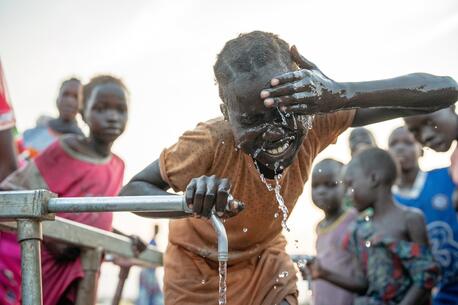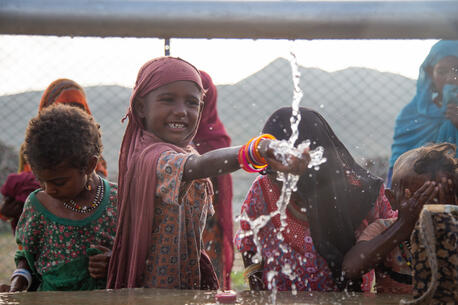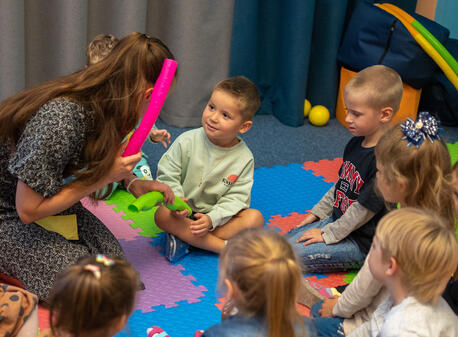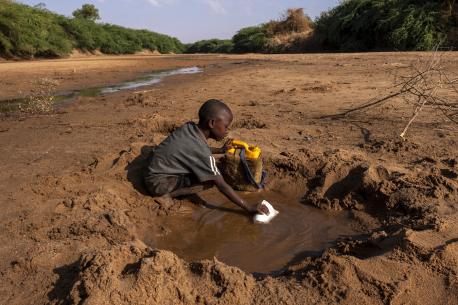
UNICEF: Water Crises Pose Triple Threat to 190M Children Worldwide
As world leaders prepare to meet in New York for the first UN water conference in decades, UNICEF shares new findings about the devastating impacts of water-related crises on children and makes the case for greater investment in climate-resilient WASH services.
Safe water is essential to life itself. Proper sanitation and hygiene prevent the spread of disease and infection, and ensure human dignity. Without these essential services, the most basic needs of life are unmet. Children die of diarrheal disease. Their education is disrupted or stalled. Malnutrition is magnified due to growing food insecurity – driven in part by water resource challenges. Families are forced to migrate. Armed conflict and child labor proliferate...
So begins the new UNICEF report explaining how a deadly combination of disease, climate risks and inadequate and unsafe water, sanitation and hygiene (WASH) are endangering the lives of 190 million children around the world. The "Triple Threat" report was released two days before the start of a major UN water conference in New York.
At highest risk are 90 million children in 10 African countries who are facing this triple threat. The threats are most acute in Benin, Burkina Faso, Cameroon, Chad, Côte d’Ivoire, Guinea, Mali, Niger, Nigeria and Somalia — making West and Central Africa one of the world’s most water-insecure and climate-impacted regions.
Armed conflict is a factor in many of the worst-affected countries, particularly in the Sahel, further aggravating children’s access to clean water and sanitation.
“Africa is facing a water catastrophe," UNICEF Director of Programs Sanjay Wijesekera said. “While climate and water-related shocks are escalating globally, nowhere else in the world do the risks compound as severely for children."
Storms, floods and droughts all contribute to water scarcity by destroying facilities and systems and contaminating water resources, while also fueling hunger crises and the spread of disease.
"Without urgent action," said Wijesekera, "the future could be much more bleak.”
UNICEF based its analysis on a comprehensive global review of household access to WASH services, the burden of WASH-attributable deaths among children under age 5 and exposure to climate and environmental hazards. The study reveals where children face the biggest threat and where investment in solutions is desperately needed to prevent unnecessary deaths.
Annual child deaths (under age 5) due to inadequate WASH show disparities across regions
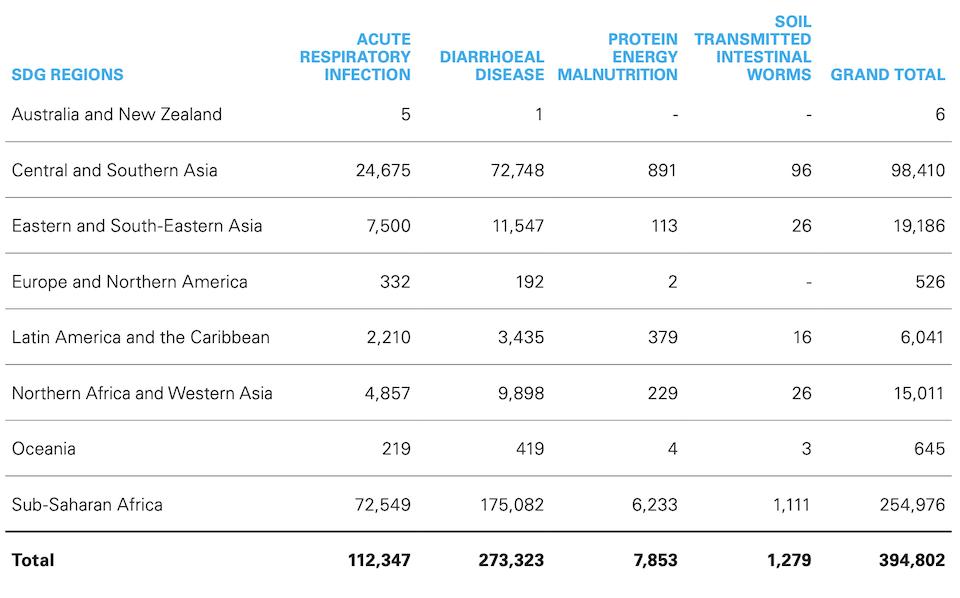
Crisis reflects severe lack of basic necessities many take for granted
Across the 10 hotspots, nearly one-third of children do not have access to at least basic water at home, and two-thirds do not have basic sanitation services. A quarter of children have no choice but to practice open defecation.
Hand hygiene is also limited, with three-quarters of children unable to wash their hands because of lack of water and soap at home.
As a result, these countries also carry the heaviest burden of child deaths from diseases caused by inadequate WASH, such as diarrheal diseases.
Investing in climate-resilient water, sanitation and hygiene services is not only a matter of protecting children’s health today, but also ensuring a sustainable future for generations to come. — Sanjay Wijesekera, Director of Programs at UNICEF
For example, 6 of the 10 have faced cholera outbreaks over the past year. Globally, more than 1,000 children under 5 die every day from WASH-related diseases, with around 2 out of 5 concentrated in these 10 countries alone.
These hotspots also rank within the top 25 percent of 163 countries globally with the highest risk of exposure to climate and environmental threats. Higher temperatures – which accelerate pathogen replication – are increasing 1.5 times faster than the global average in parts of West and Central Africa.
Climate and environmental threats are making a chronic problem much worse
Groundwater levels are also dropping, requiring some communities to dig wells twice as deep as just a decade ago. At the same time, rainfall has become more erratic and intense, leading to floods that contaminate scarce water supplies.
All 10 hotspot countries are also classified as fragile or extremely fragile, with the stresses of armed conflict in some countries threatening to reverse progress toward safe water and sanitation.
For example, Burkina Faso has seen a ramping up of attacks on water facilities as a tactic to displace communities. Fifty-eight water points were attacked in 2022, up from 21 in 2021, and three in 2020. As a result, more than 830,000 people – over half of whom are children – lost access to safe drinking water in the past year.
UNICEF is calling for rapid scale-up of WASH investments
UNICEF's report comes ahead of the first UN water conference in 46 years. World leaders and other stakeholders are set to met in New York City March 22-24 to discuss efforts toward ensuring access to water and sanitation for all — one of the Sustainable Development Goals for 2030.
UNICEF is advocating for:
- rapid scale-up of investment in WASH services — including from global climate financing
- strengthening climate resilience in the WASH sector and communities
- prioritizing the most vulnerable communities in WASH programs and policies
- increasing effective and accountable systems, coordination and capacities to provide water and sanitation services
- implementing the UN/SDG framework for accelerating progress in the sector
“The loss of a child’s life is shattering for families," Wijesekera said. "But the pain is intensified when it is preventable, and caused by the lack of basic necessities many take for granted like safe drinking water, toilets and soap. Investing in climate-resilient water, sanitation and hygiene services is not only a matter of protecting children’s health today, but also ensuring a sustainable future for generations to come.”
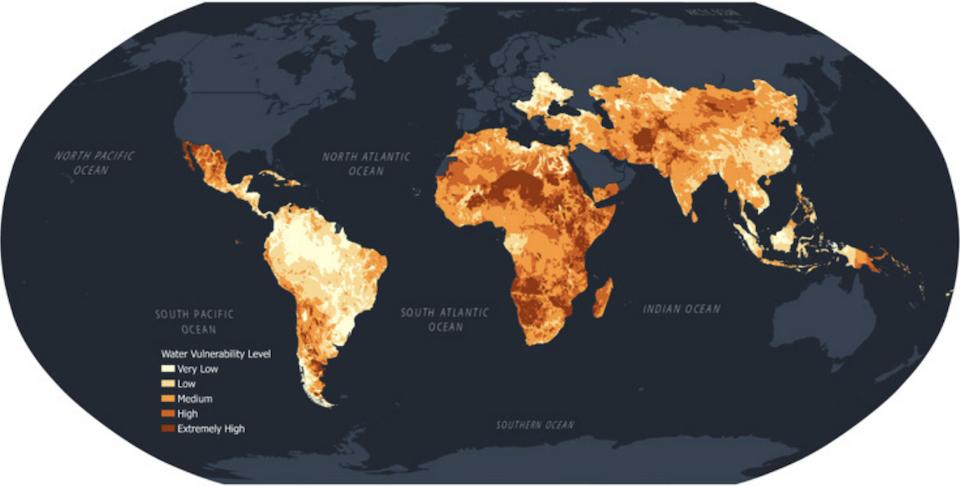
UNICEF-supported efforts are making a difference in water-vulnerable communities — but much more needs to be done
UNICEF provides direct support to families and communities with WASH services while also working with governments and partners to strengthen systems. Over three years, from 2018–2021, UNICEF met its target despite operational challenges posed by the COVID-19 pandemic, reaching 60 million people with safe drinking water sources in their communities.
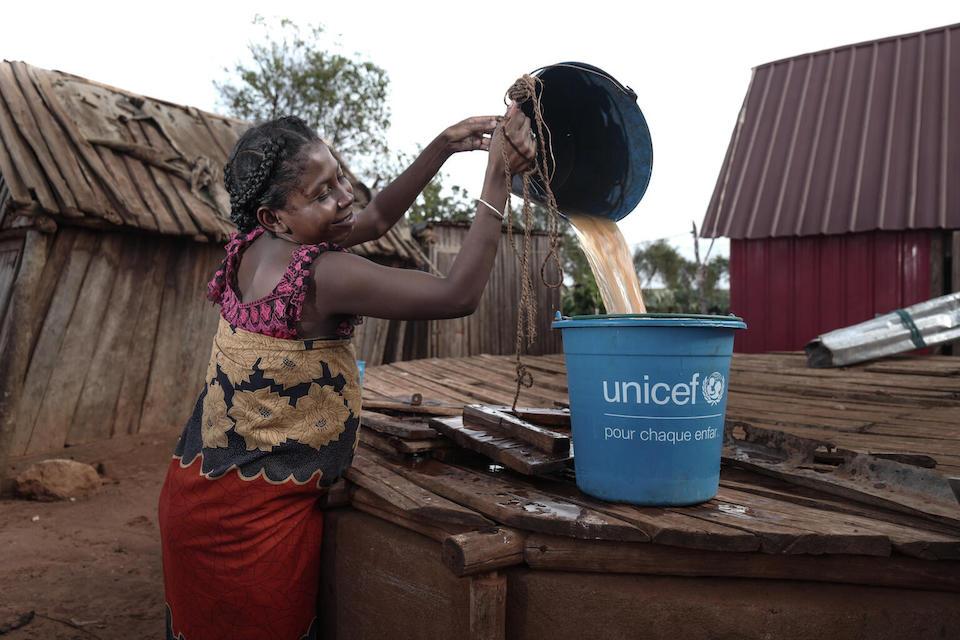
In 2021, the most recent year for which program results are available, UNICEF worked in 128 countries with WASH interventions — more than ever before and more than any other agency. Activities included:
- providing technical and other support for the installation of 1,523 new solar-powered water systems, improving access to safe water in communities in need
- providing gender-segregated sanitation facilities in 21,112 schools
- providing 16,699 health care facilities with WASH services
- helping 33.3 million people gain or regain access to water services for drinking and hygiene and 8.4 million to access sanitation services
- reaching 11.6 million children in schools and temporary learning spaces with emergency WASH services
"UNICEF has set an ambitious goal to reach 450 million children and their families (1.42 billion people) living in areas of high or extremely high-water vulnerability with resilient solutions," the "Triple Threat" report states. "UNICEF also wants to reach 1 billion people with safely managed sanitation in support of the SDG 6 vision."
